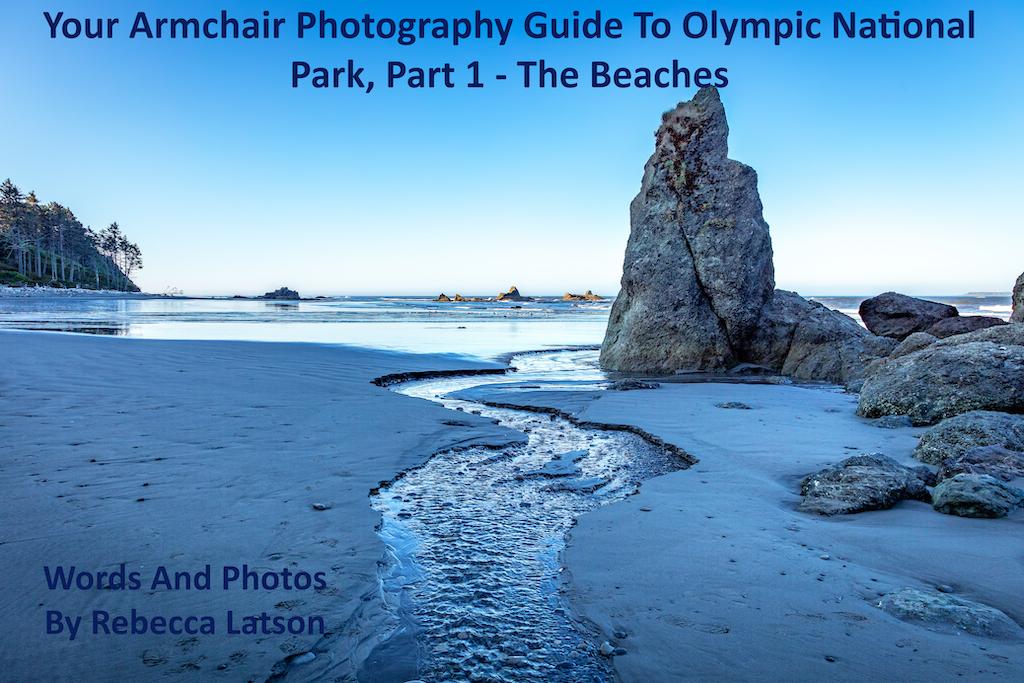
Olympic National Park is the place to go if you ever want to visit a national park covering a little bit of everything. Within an expanse of almost 1 million acres, you’ll see beaches, forests, and mountains veined with a network of clear, cold streams, rivers and waterfalls.
Because of the size of this national park, I made not one, but two trips, this year, from my home in central Washington. I didn’t get to all the places I’d intended, but I've covered enough territory to present you with another Armchair Photography Guide which you can use for fostering your own photographic adventures along the Olympic Peninsula.
If you are new to the Traveler or new to this photography column, I created these Armchair Photography Guides for those of you who cannot, or do not want to, hike long trails or deep into the backcountry with a pack full of camera gear. I believe you can achieve amazing images from pullouts, view areas, and along short trails with your smartphone, point-and-shoot, or SLR camera using tips and techniques I provide in these guides.
My January trip was short in duration and coincided with the partial government shutdown. I wrote a previous article for the Traveler about this visit. My recent late August / early September trip lasted a week, during which I managed to cover ocean, forest, and mountain views of this national park. Because there is so much to encompass, photographically, I figured I’d focus on the beaches in this article, with subsequent installments for the forests and mountains.
The map below delineates my combined winter and summer route through the park (yellow lines) and the route I took to visit the beaches listed here (red line). The photos you see in this article are a combination of mostly summer shots and a few winter images.

The photographic route through Olympic National Park for this article / NPS / Rebecca Latson
When planning your own trip to the coastal portions of Olympic National Park, be aware that, during the winter, the crowds are generally sparse, but the weather is wet and inclement and beach access might be a little more difficult due to trail washouts and huge logjams from storms. Summer access is considerably easier, with repairs to storm-damaged stairs and cleared paths around beached logs. While there are more crowds during the summer, early mornings and very late evenings are great for good lighting conditions and fewer people.
Kalaloch Beach
Let’s start this trip along the peninsula traveling south to north, with the first stop at Kalaloch Beach, below Kalaloch Lodge.
While there are no sea stacks here, there are rocks onto which waves crash for dramatic shots. To freeze the motion of a crashing wave, use a fast shutter speed and the “burst method” of holding your finger down on the shutter button for 4 – 5 clicks. Since fast shutter speeds (fps) mean less light going through the lens, you’ll want to open your aperture to maybe f/4 – f/6.3 and/or bump up the ISO anywhere from 250 to 1250, depending upon the time of day you are at the beach. SLRs and some point-and-shoot cameras have manual and aperture / shutter priority settings. If you are using a smartphone, touch that little white shutter button several times in succession for at least one clear shot. Use your telephoto lens or zoom setting on your point-and-shoot or smartphone to get really close to those waves (without getting wet and being pulled under by riptides).
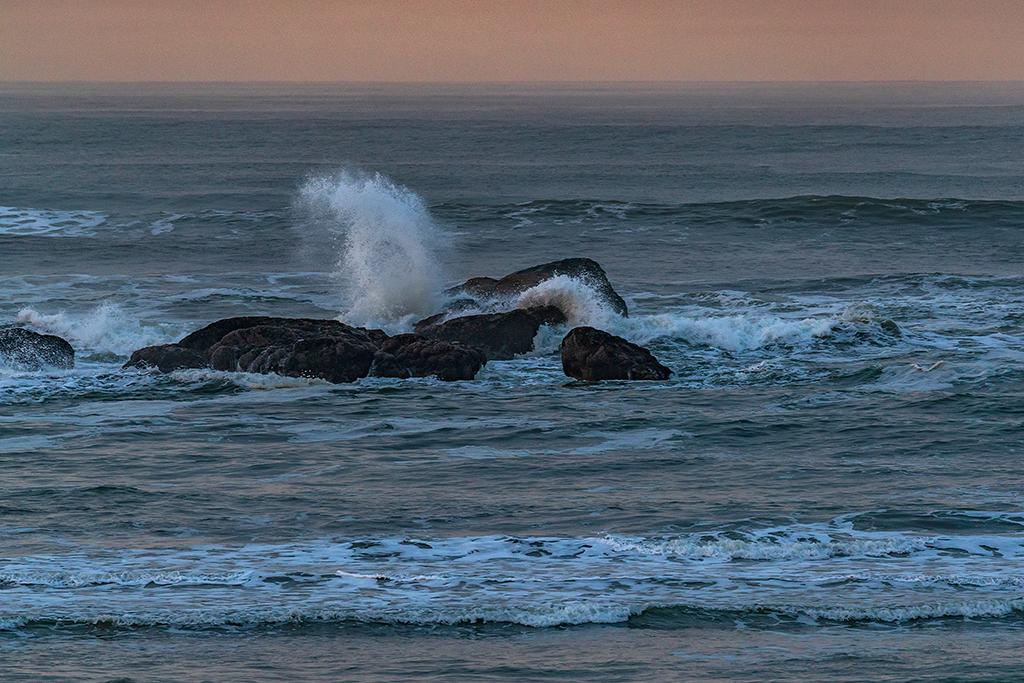
Crashing waves at Kalaloch Beach, Olympic National Park / Rebecca Latson
To capture the full spectacle of ocean motion and stormy skies (especially prevalent during the winter months), set your camera on a tripod and make use of either a circular polarizer (CPL) or a graduated neutral density (grad ND) filter to darken the horizon and delineate cloud texture. For those of you not familiar with CPL or grad ND filters, check out this article I wrote for the Traveler.
Tide levels change with the season, and summer mornings can produce very low tides at this beach with plenty of rocky tidepools to explore. Use your CPL to remove glare and reflections when photographing through the water. Smooth, ripple-free tidepool shots of anemones’ floating tentacles are best in the morning. Mornings are also great for mirror-still reflections of sky and scenery in pools of water along the beach during low tide.
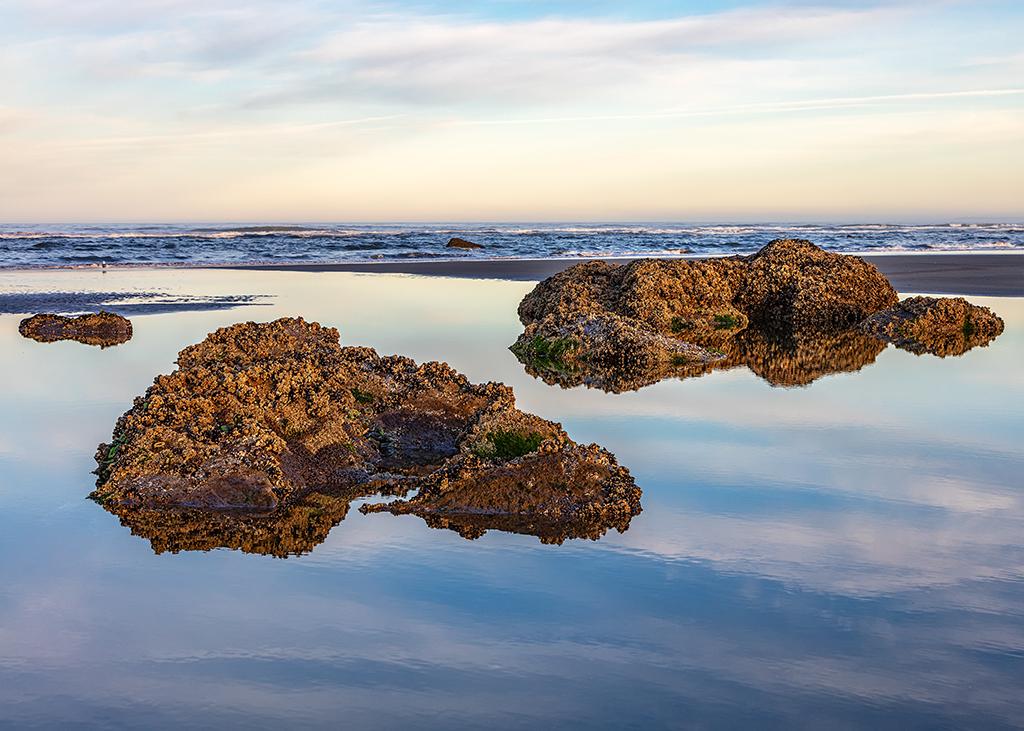
Rock, reflections, sand, sea, and sky, Kalaloch Beach, Olympic National Park / Rebecca Latson
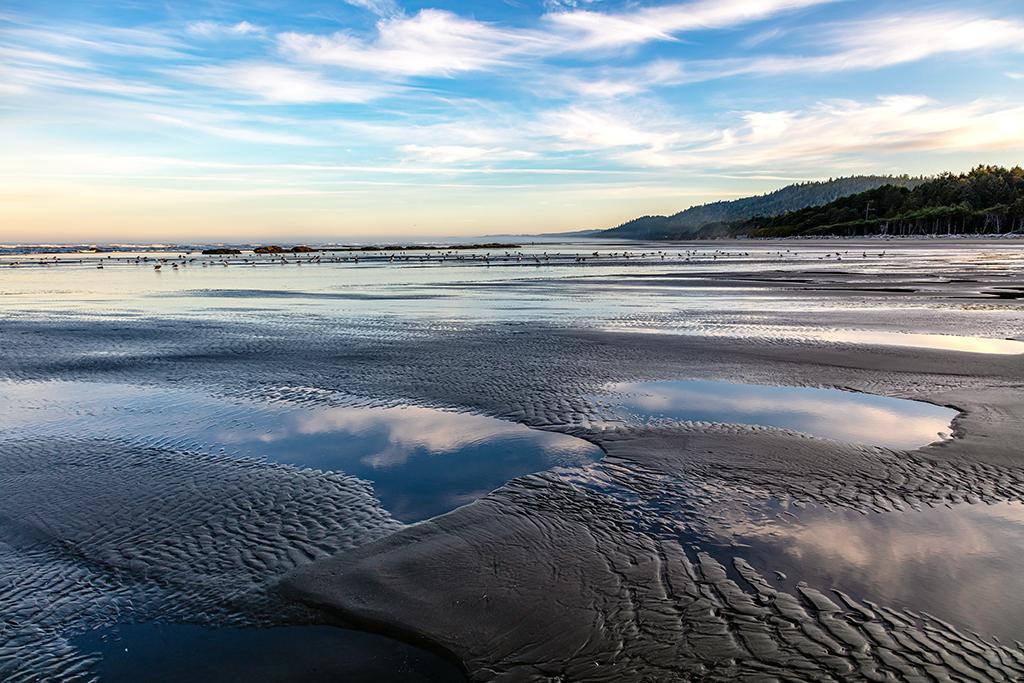
Morning low tide scenery along Kalaloch Beach, Olympic National Park / Rebecca Latson
Turn your camera away from the ocean and concentrate on outcrops. Make sure your settings are adjusted to account for the darker exposure of the trees and shrubs populating the high bluffs.
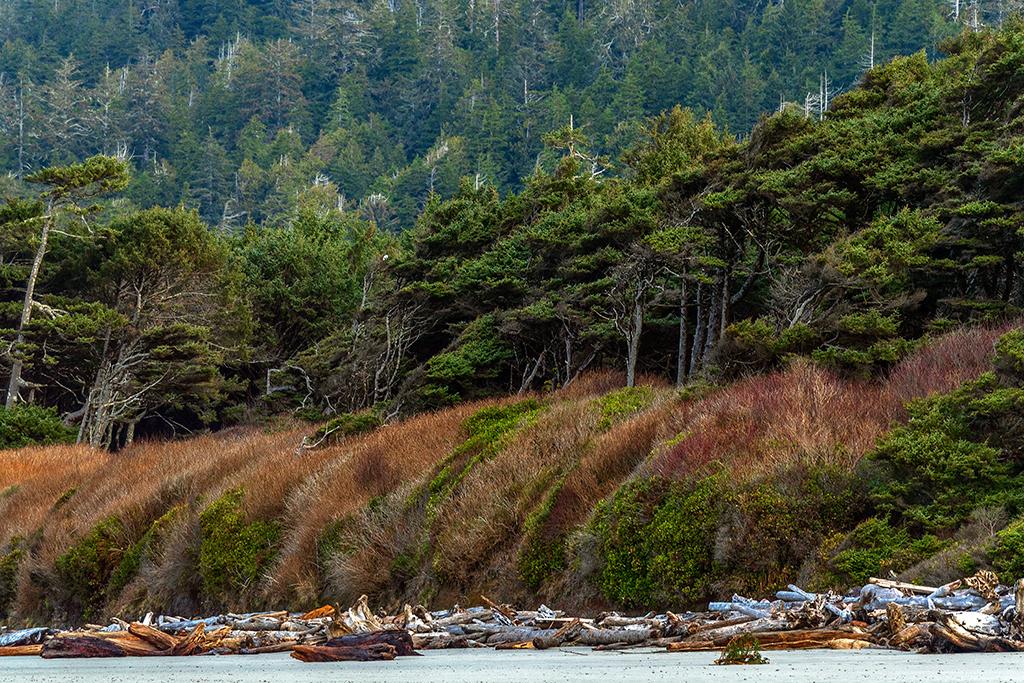
Bluff scenery at Kalaloch Beach, Olympic National Park / Rebecca Latson
Capture a shot of the gulls flocked on the ground or in the air.
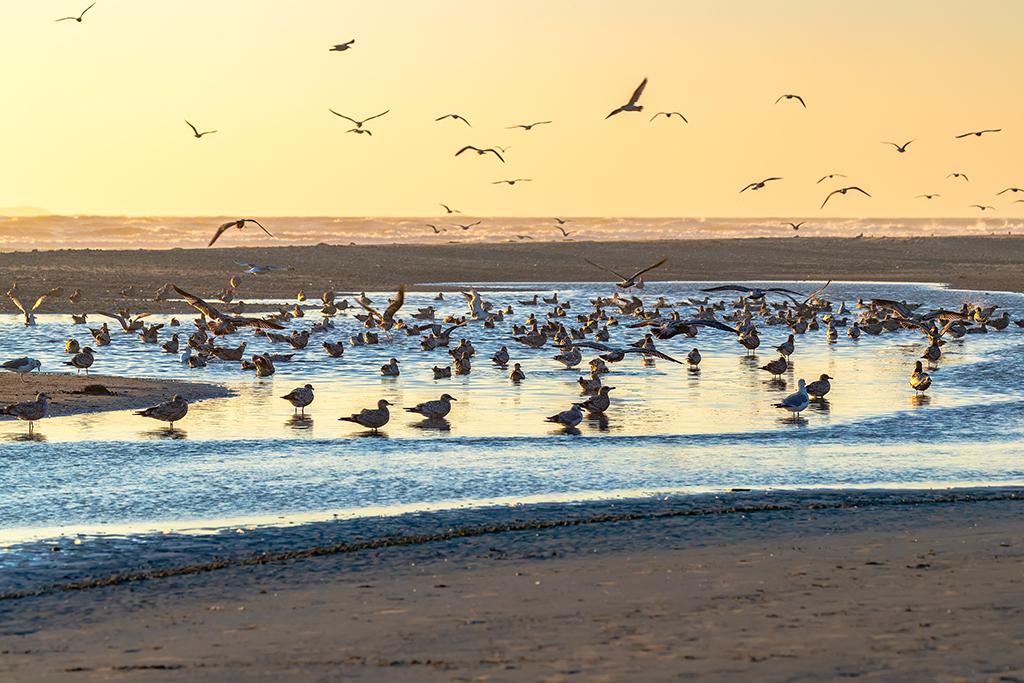
Gulls on the ground at Kalaloch Beach, Olympic National Park / Rebecca Latson
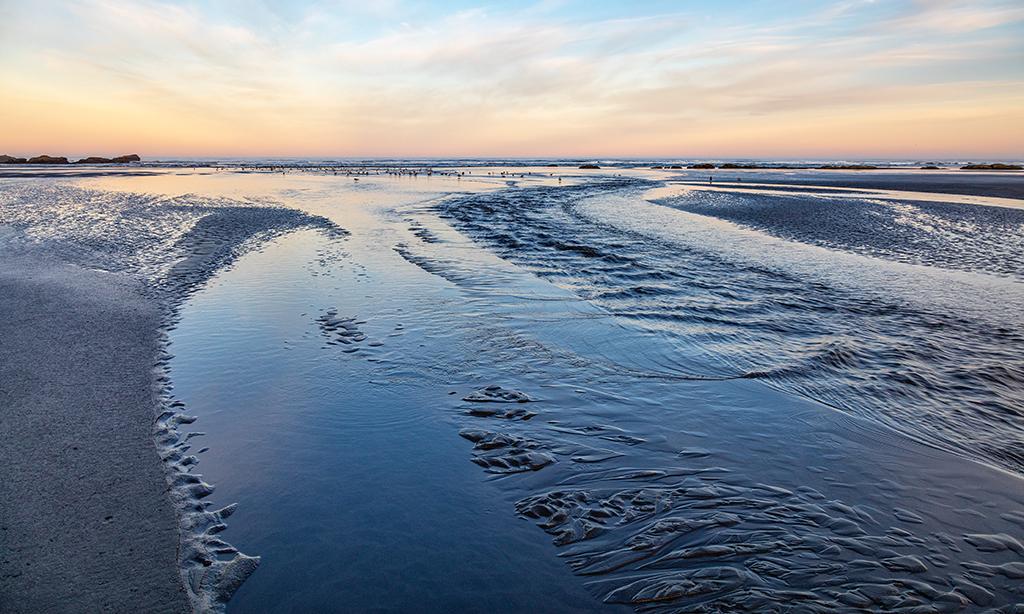
Sunrise on Kalaloch Beach, Olympic National Park / Rebecca Latson
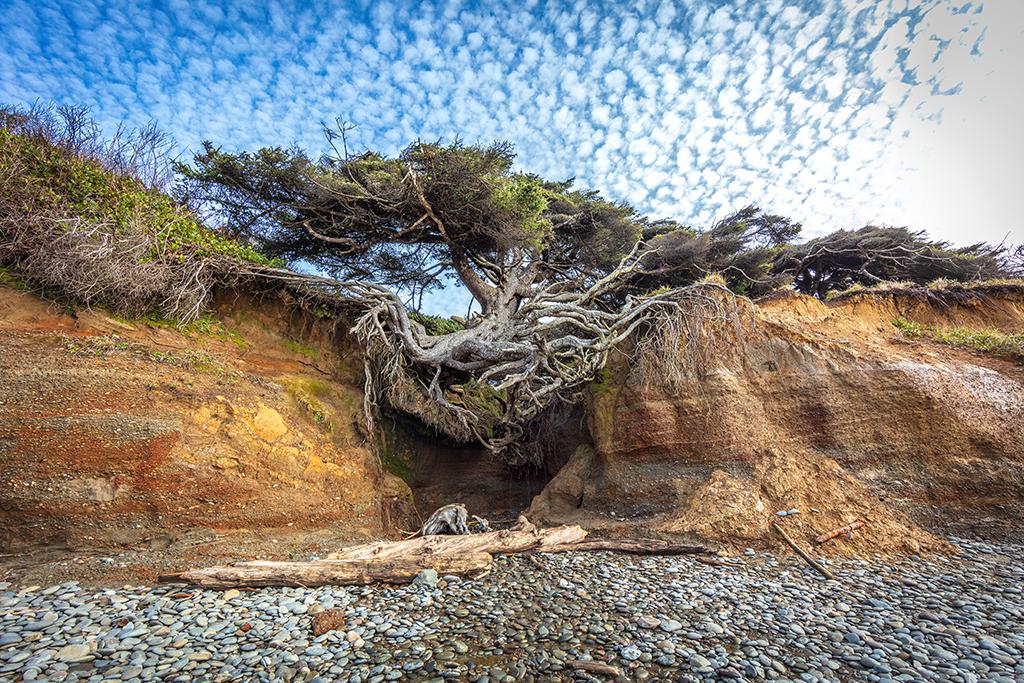
The "Tree of Life," aka the "Tree Cave," Kalaloch Beach, Olympic National Park / Rebecca Latson
Beach 4
The beaches around Kalaloch are numbered and in my opinion, Kalaloch Beach 4 is one of the best of these, complete with a parking lot, restrooms, and a well-maintained trail ending at a bridge over a outcrop of tilted and overturned sedimentary rock layers through which runs a clear stream out to the ocean. You’ll have to do a little clambering down to get to the beach, but it’s not difficult, even for those of you with short legs, like me. I sat down on my rump and slid my way to the sandy ground. Before you do that, though, get some leading line shots of the trail and the bridge. The leading line technique guides your photo audiences’ eyes from one part of the photo to another. This technique also creates a sense of “where” and “what,” as in “where will that trail / bridge / road take you” and “what adventure awaits at the end of the trail, or across that bridge, or down the road?”
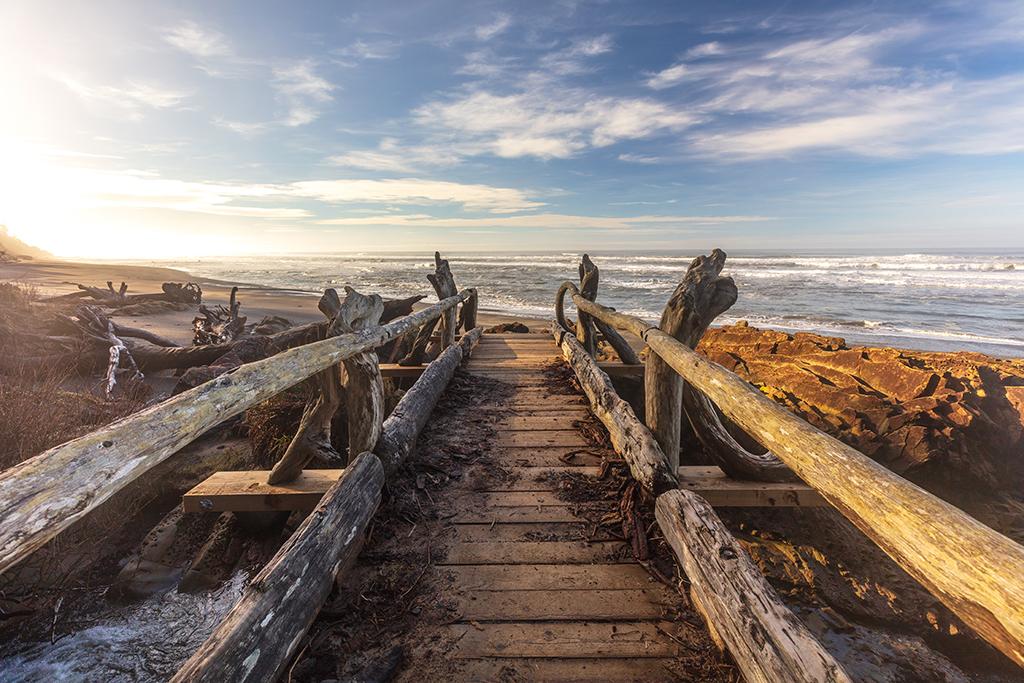
The bridge to Beach 4, Olympic National Park / Rebecca Latson
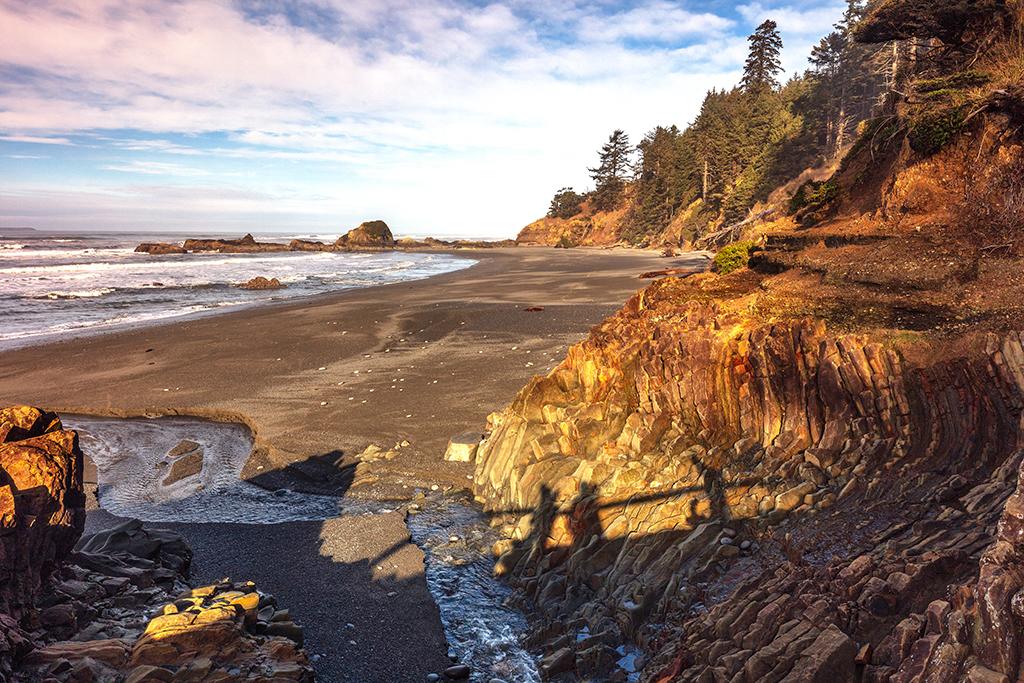
Tilted beds and Beach 4 scenery, Olympic National Park / Rebecca Latson
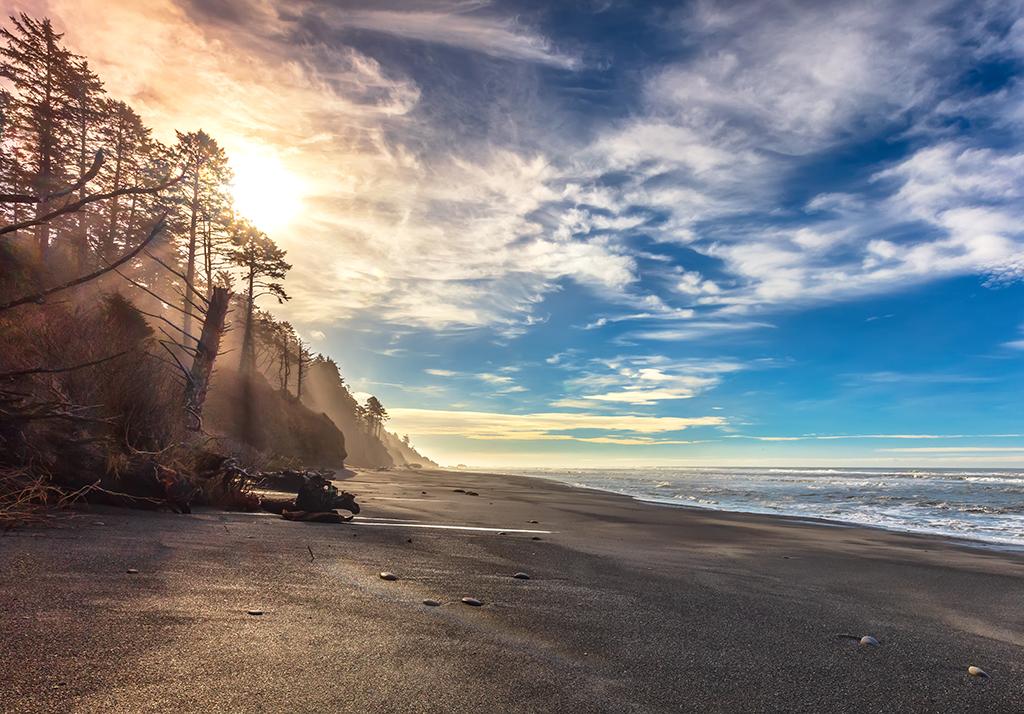
A Beach 4 southern view in the winter, Olympic National Park / Rebecca Latson
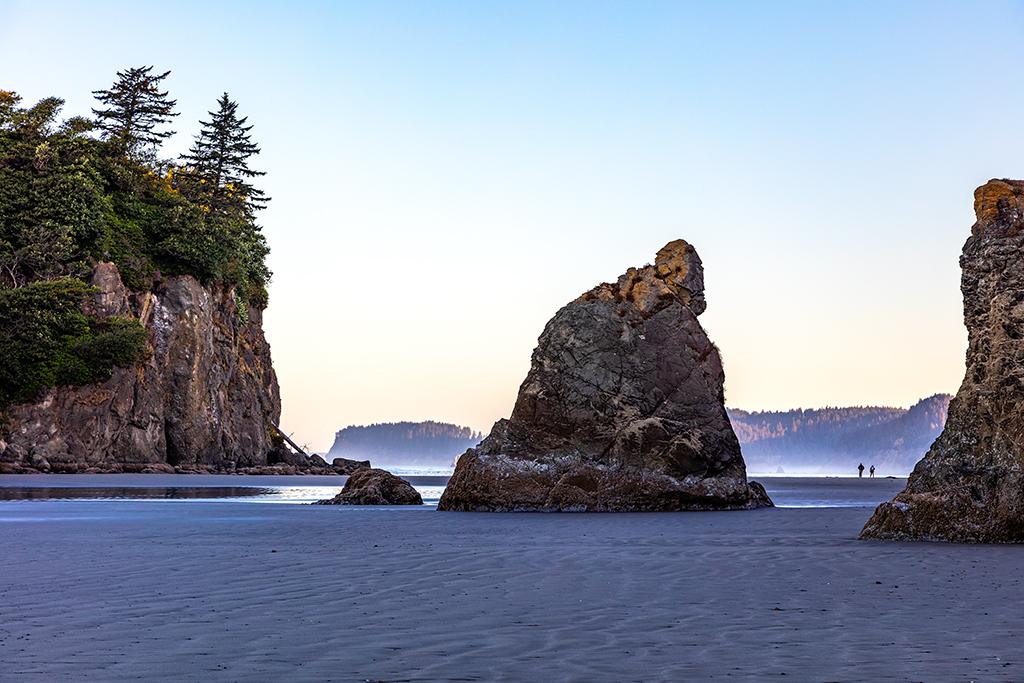
An early morning, low-tide view of Ruby Beach, Olympic National Park / Rebecca Latson
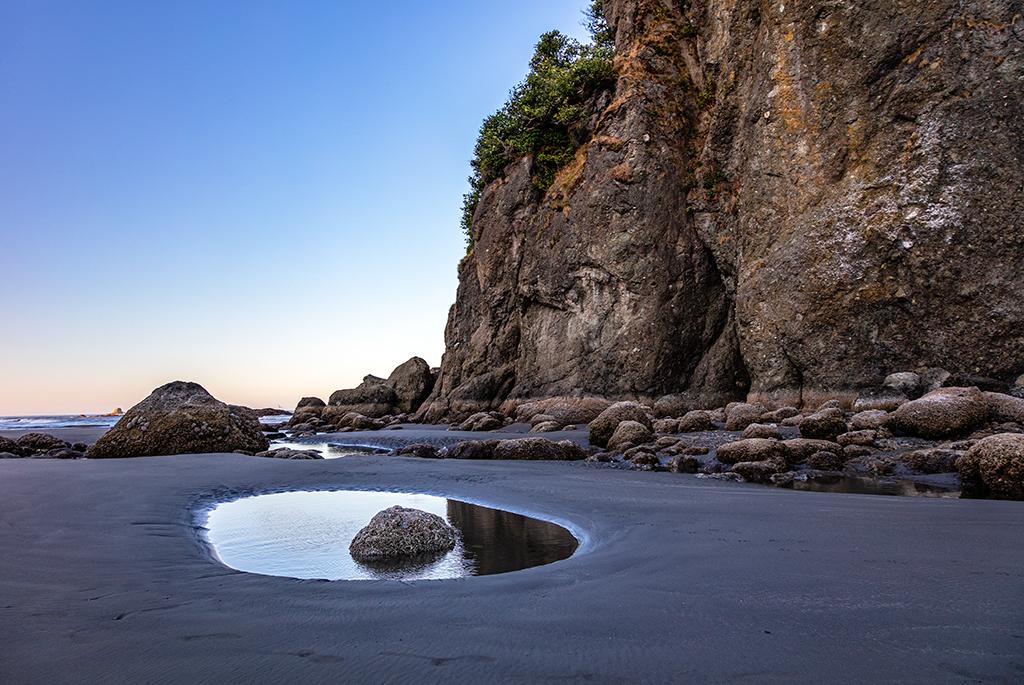
Approaching the tide pools near Abbey Island, Olympic National Park / Rebecca Latson
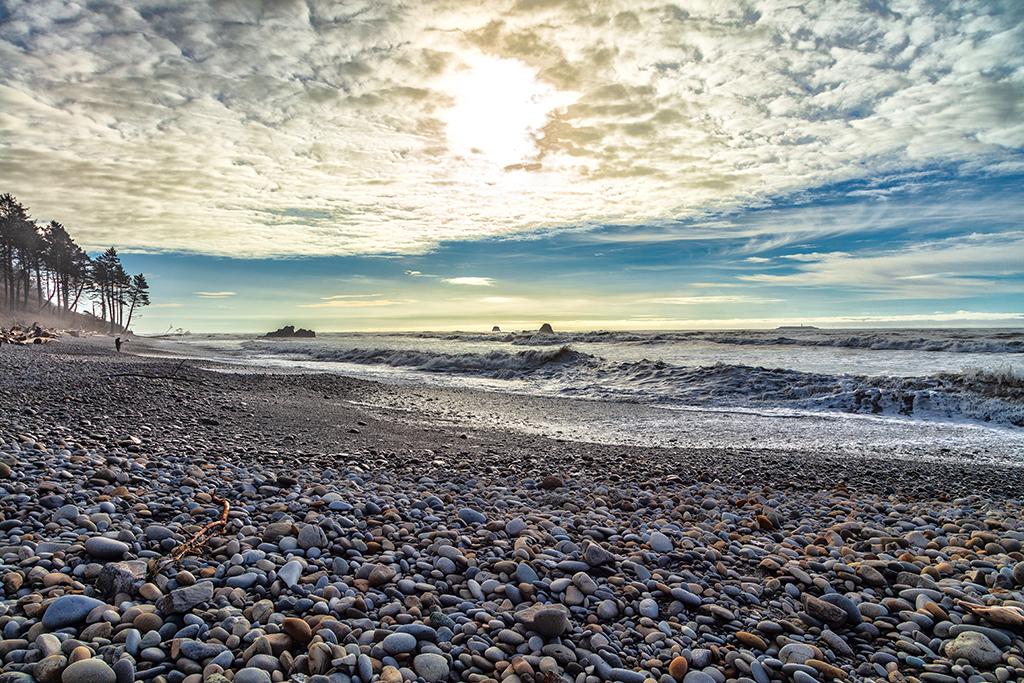
A winter afternoon at Ruby Beach, Olympic National Park / Rebecca Latson
Rialto Beach
From Ruby Beach, head north on Hwy 101, turn left onto 110, and head toward the community of La Push. Turn right onto Mora Road and drive to Rialto Beach, with its large parking lot and very easy access. Depending upon your time of arrival, the atmosphere might be hazy and you’ll need to use your CPL filter and adjust your settings for the bright, flat light. If you use your smartphone, tap on the brightest spot you see in the viewfinder and your phone should adjust its exposure accordingly.
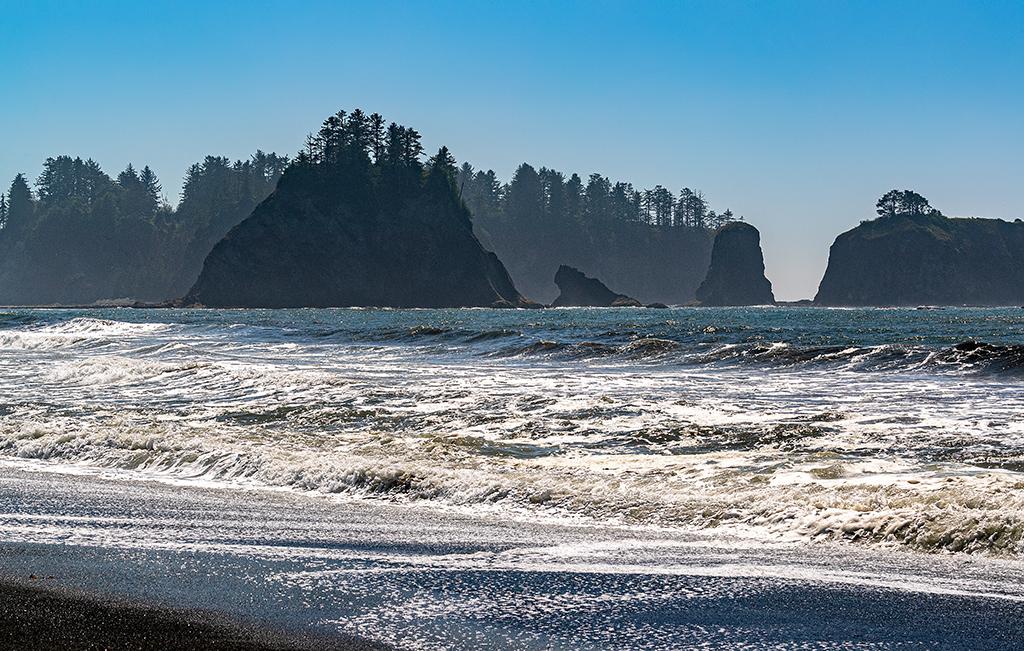
A telephoto landscape of Rialto Beach sea stacks, Olympic National Park / Rebecca Latson
Use your wide-angle lens or wide-angle point-and-shoot setting for shots of the beach, bluff and sea stacks. Hunker down closer to the ground for a different perspective of the landscape. You might also get lucky and capture pelicans cruising the currents or riding the waves, so have your telephoto lens or telephoto setting at the ready.
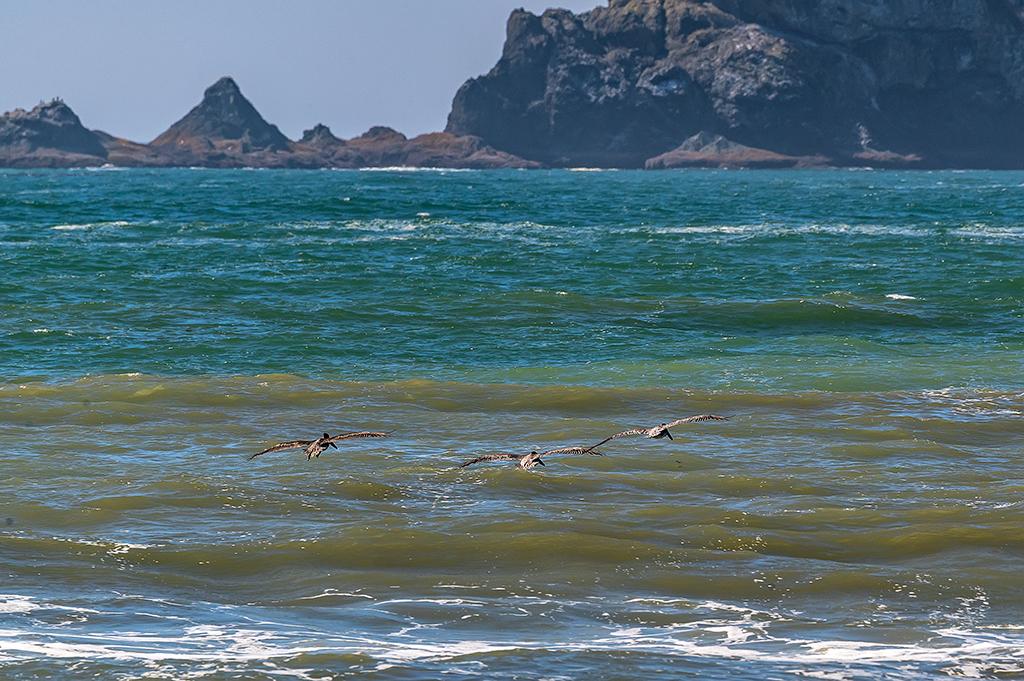
Cruising the currents at Rialto Beach, Olympic National Park / Rebecca Latson
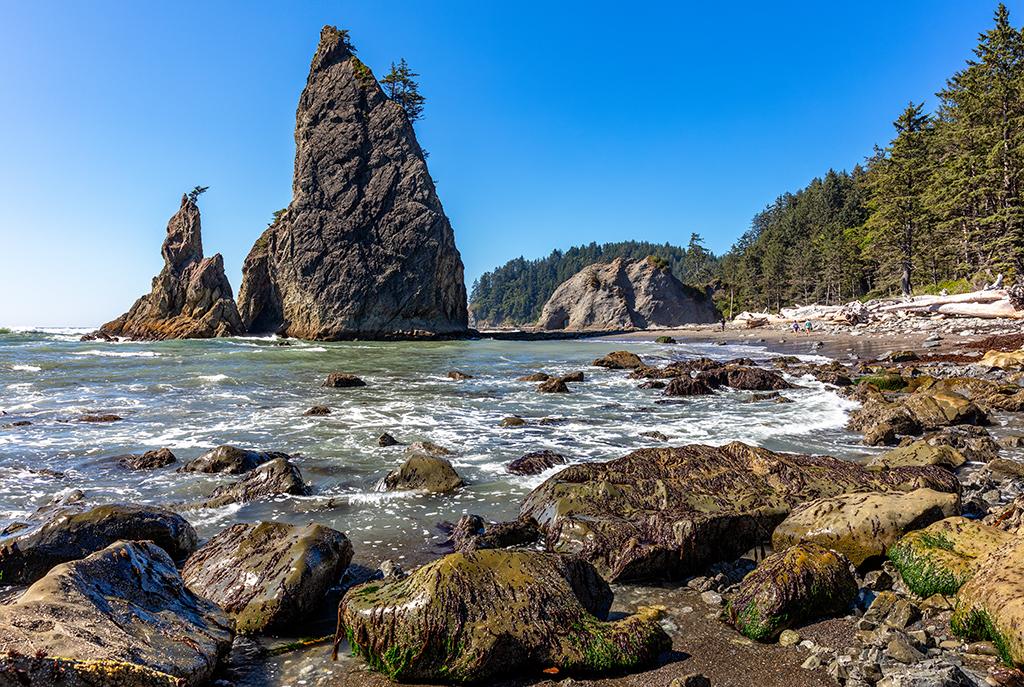
Sea stack scenery at Rialto Beach, Olympic National Park / Rebecca Latson
A 1.5-mile trek over a mostly pebbly beach with areas of packed sand will take you toward tide pools and sea stacks with such names as “Split Rock” and “Hole-in-the-Wall.” As you walk along, look up to the treetops lining the bluff where you might just see a bald eagle, or two. Consult a tide chart before making the trudge out and back, as you don’t want to get caught during high tide.
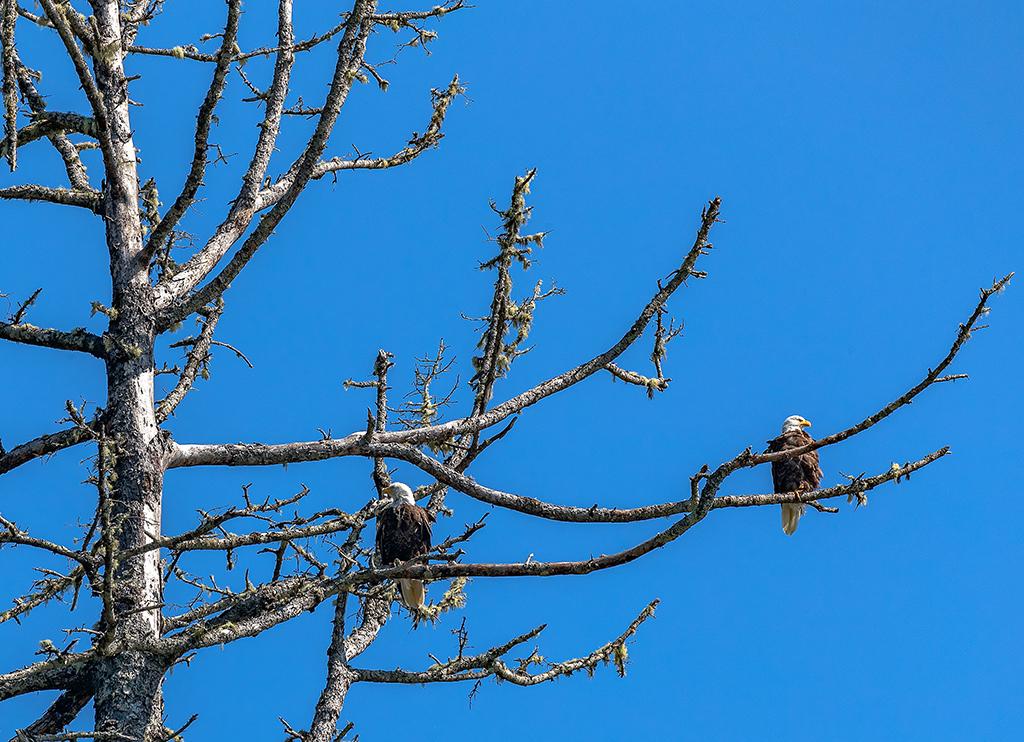
A perfect perch for viewing Rialto Beach, Olympic National Park / Rebecca Latson
In truth, you could spend your entire trip simply touring the beaches within Olympic National Park, including Shi Shi Beach way up north on the peninsula, the beaches around Ozette, and beaches south of La Push. There’s plenty of scenery to explore and you are now armed with tips, techniques and gear suggestions for great Olympic coast photos.

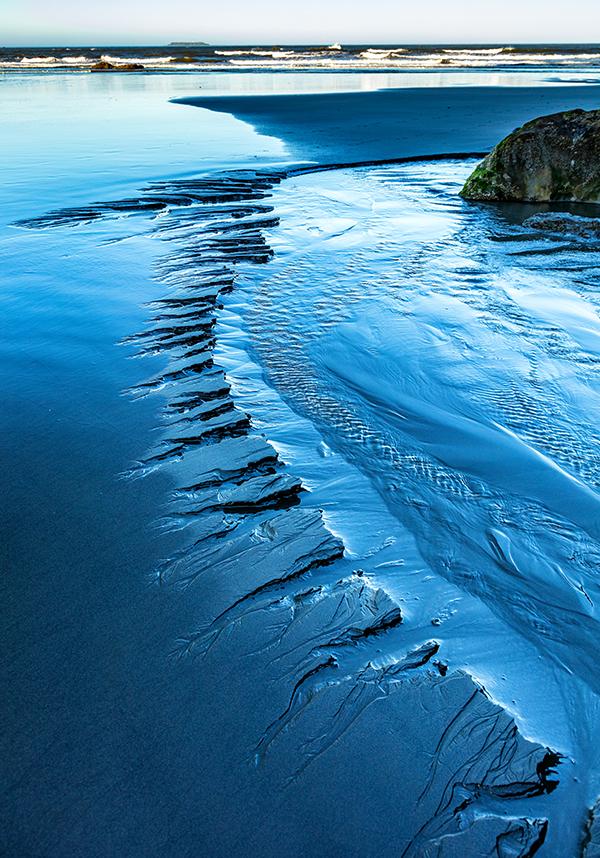
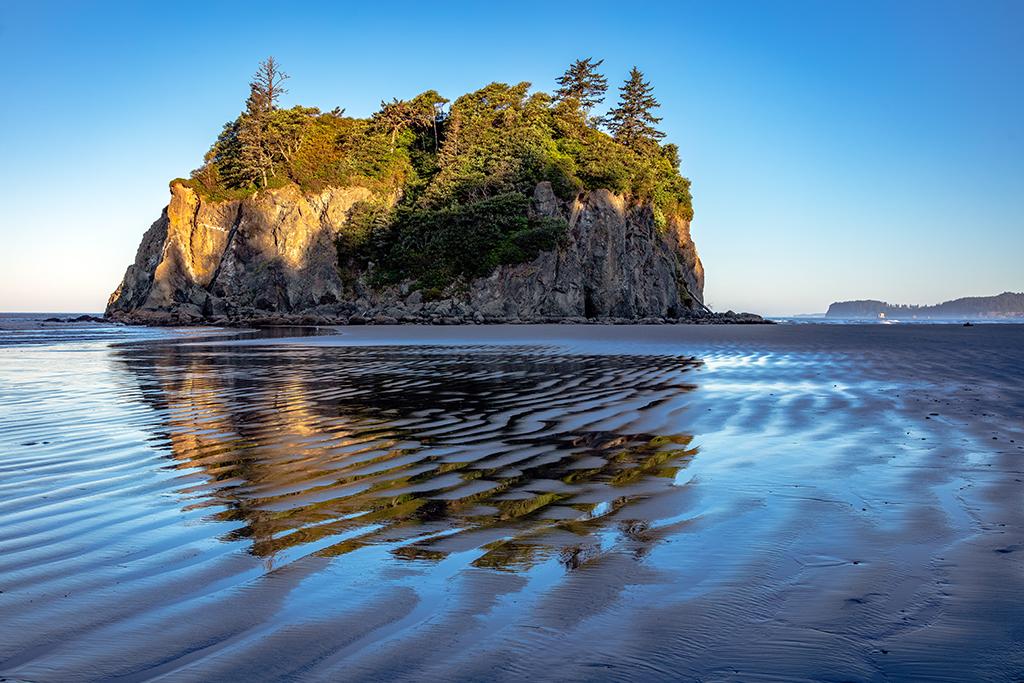
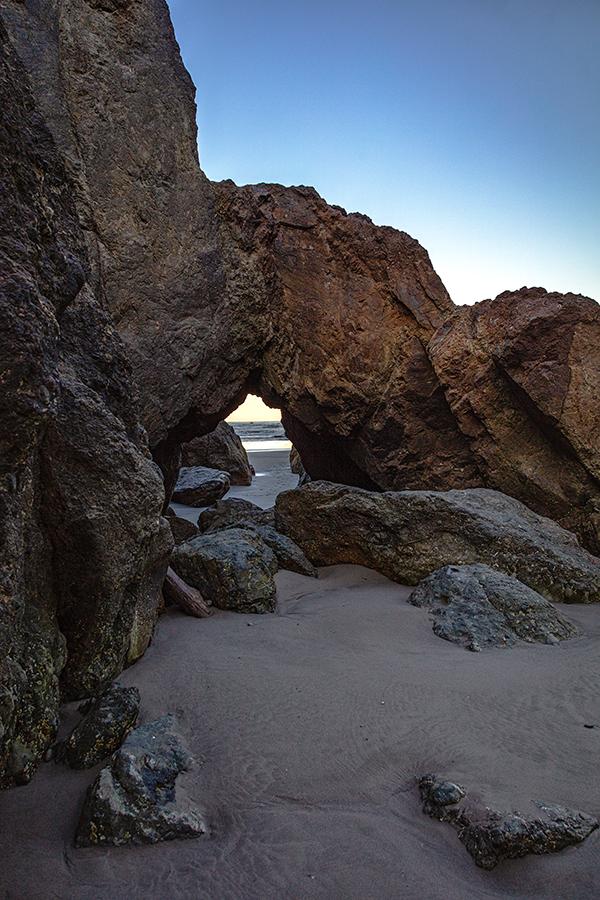
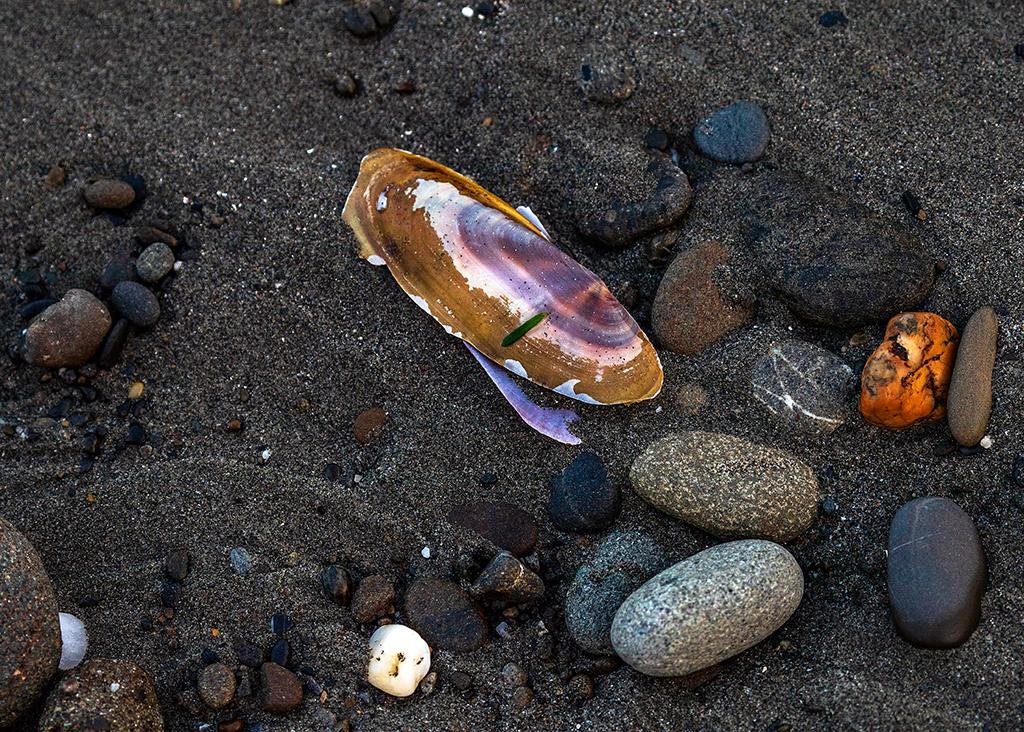
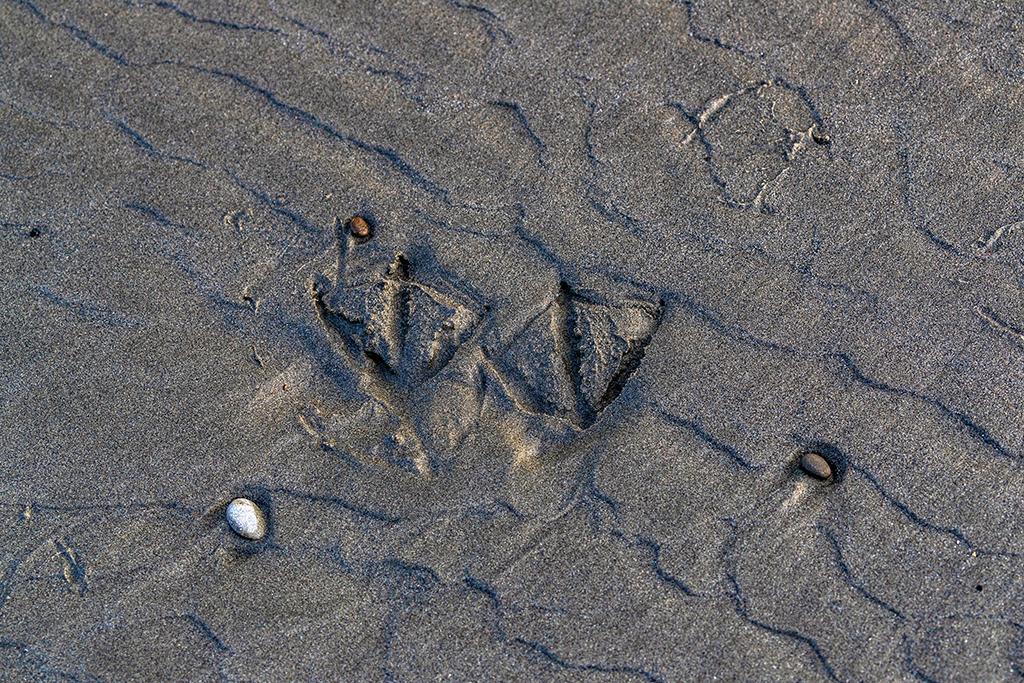
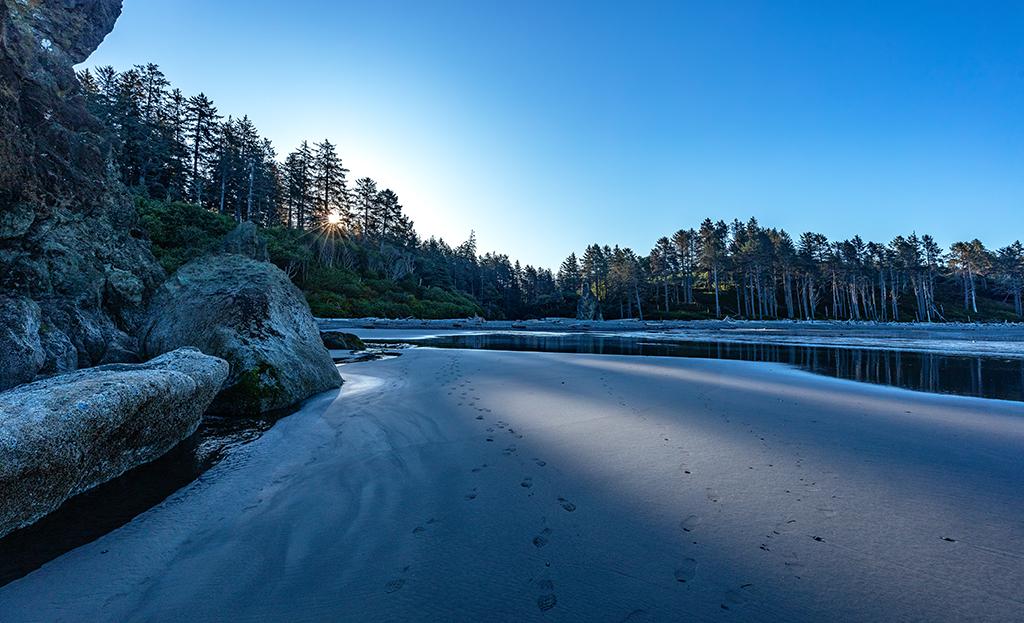
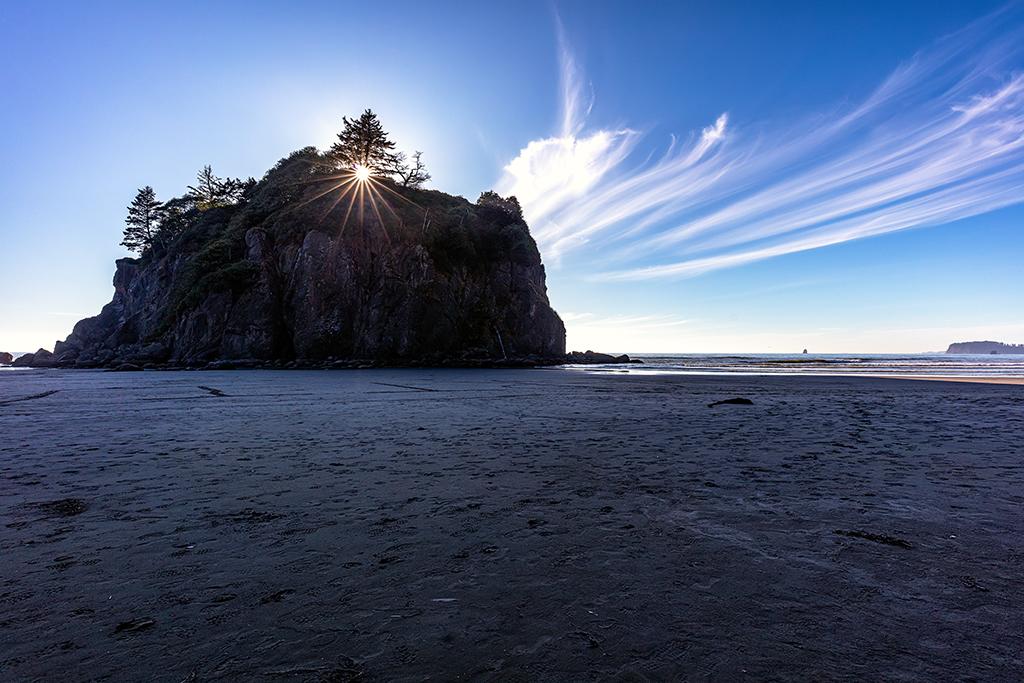
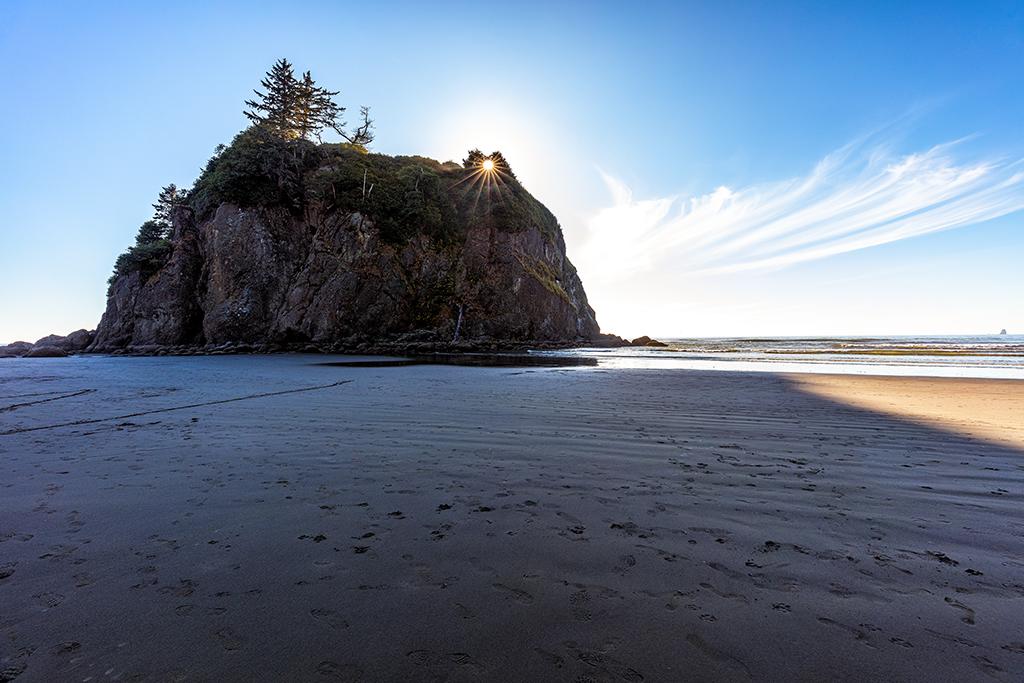
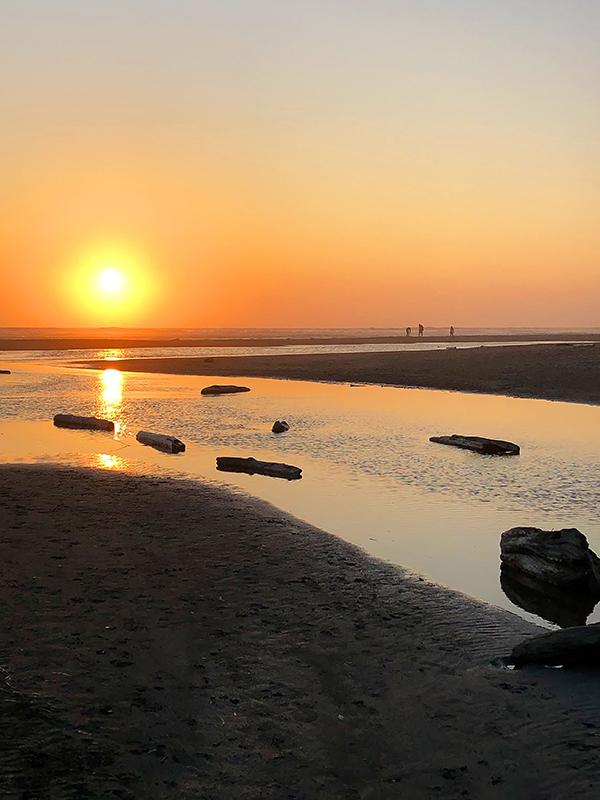
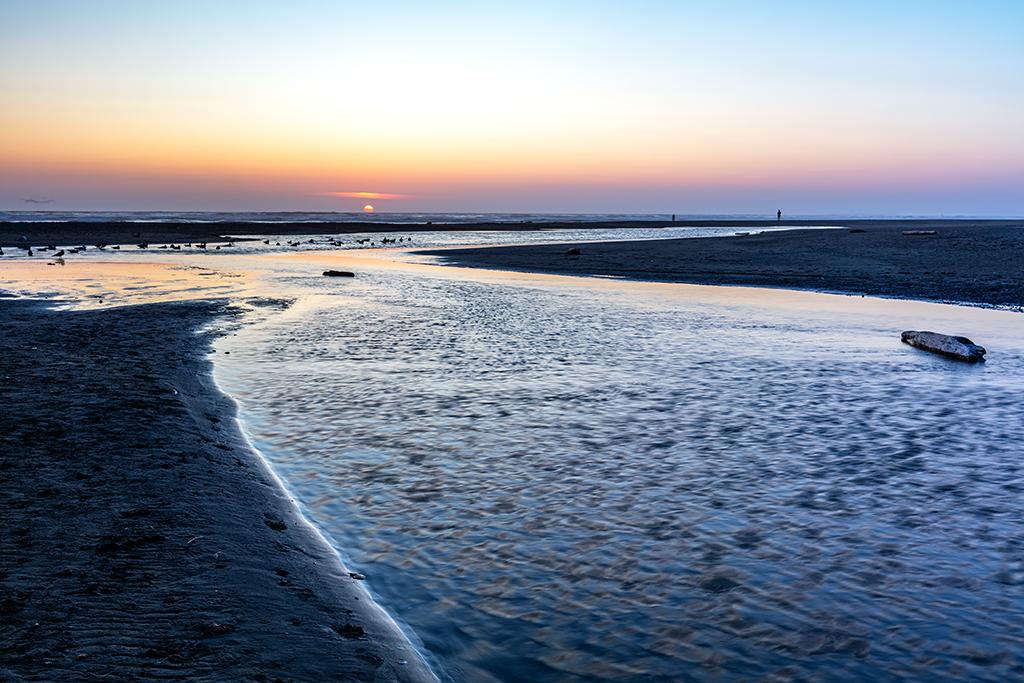
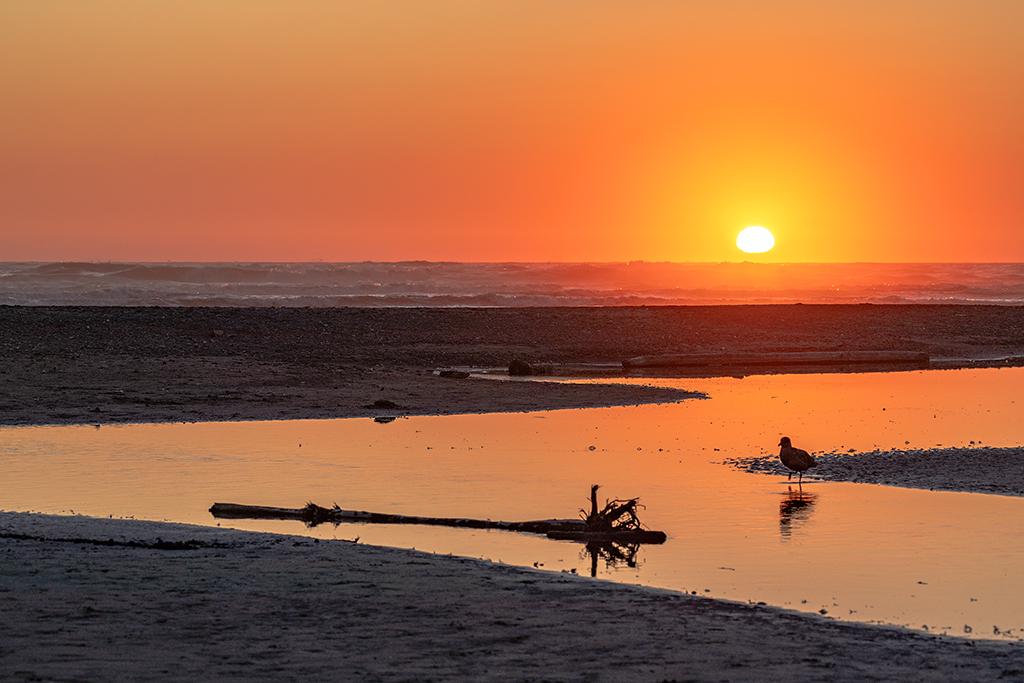
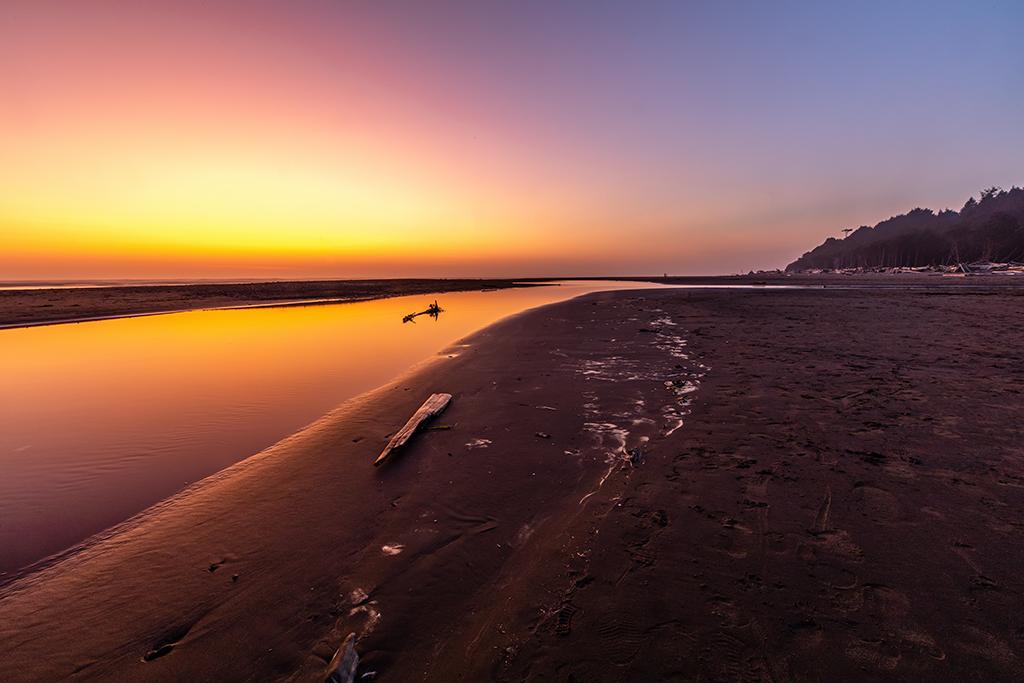
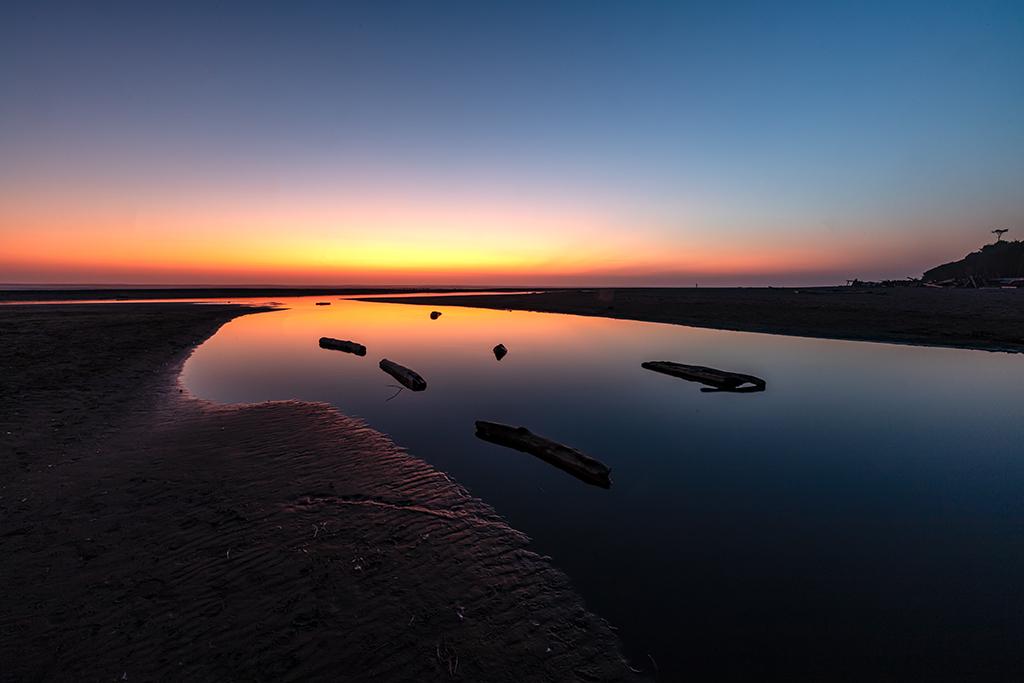
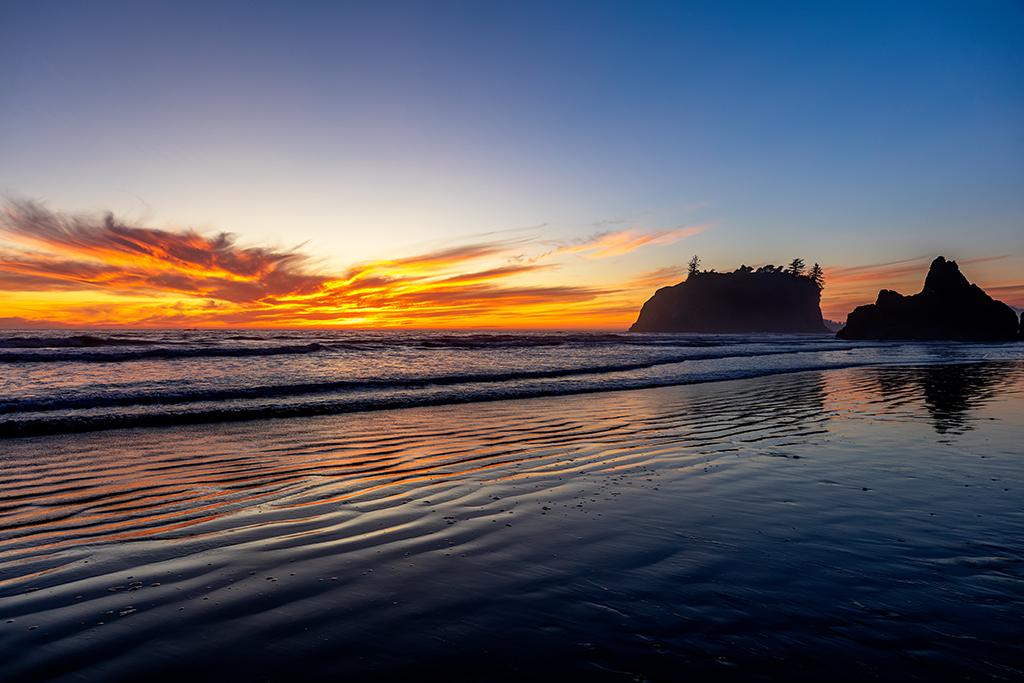
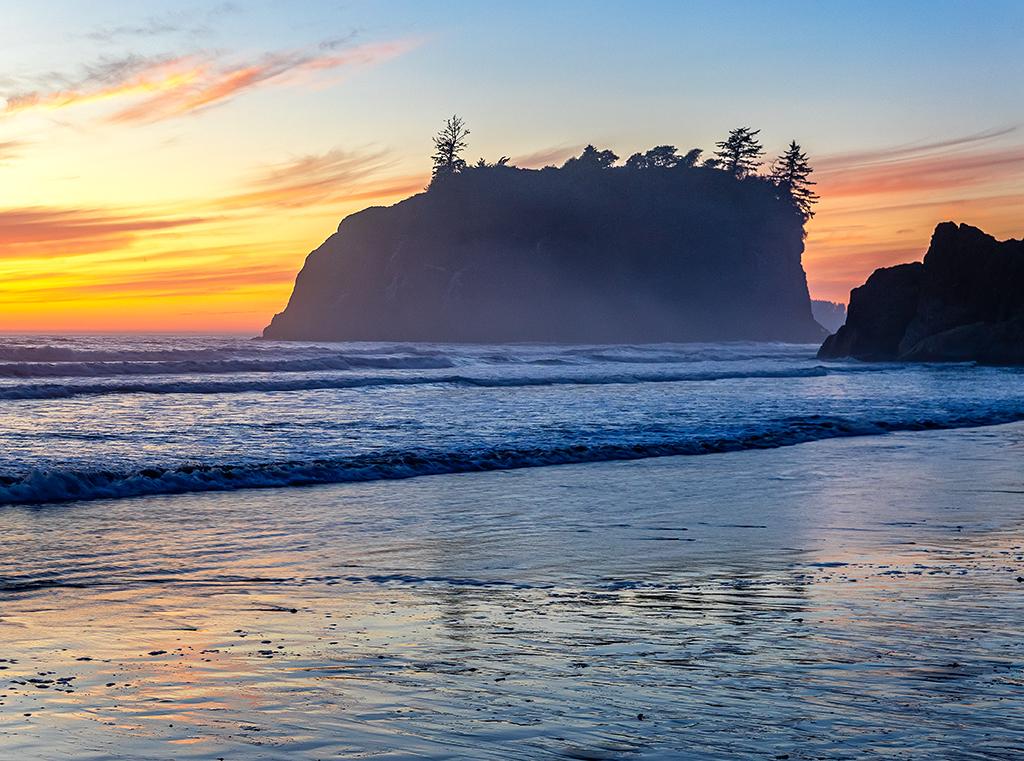
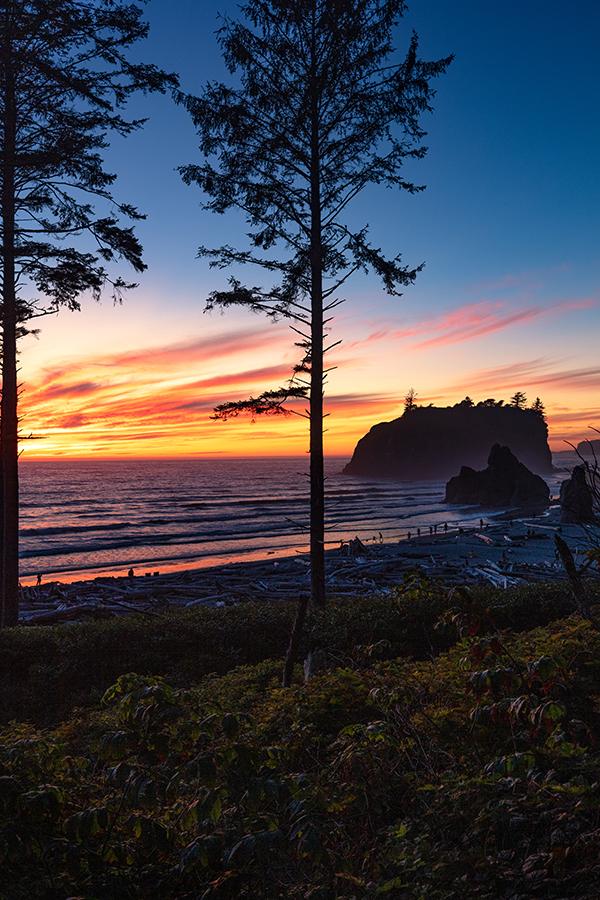
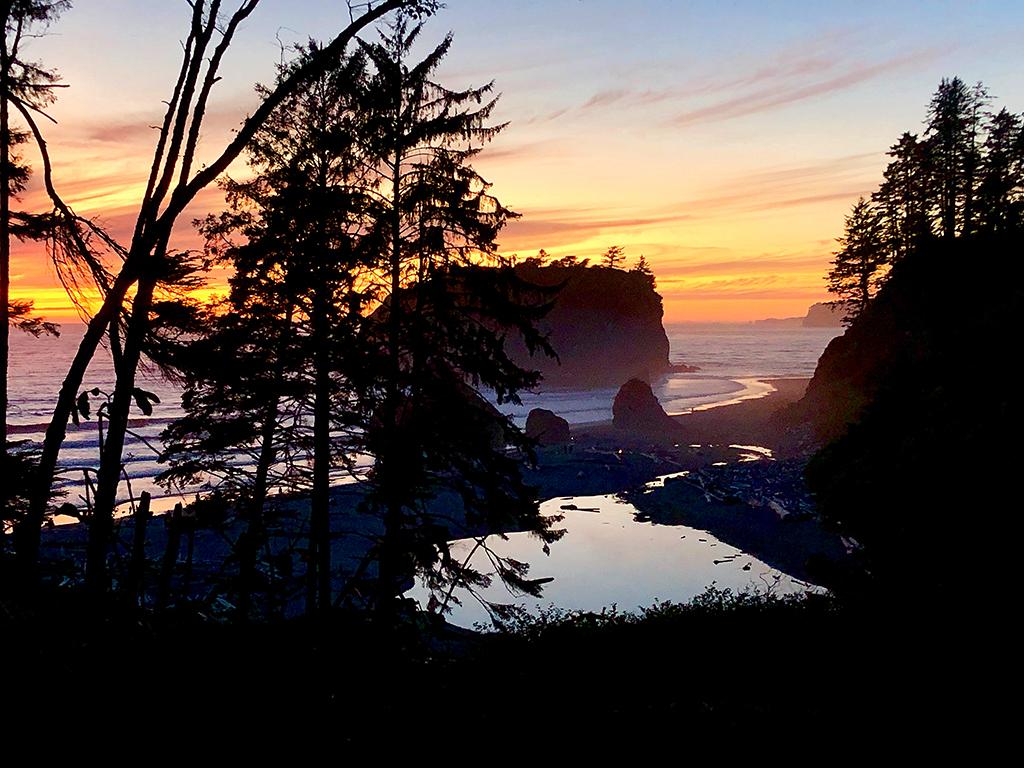
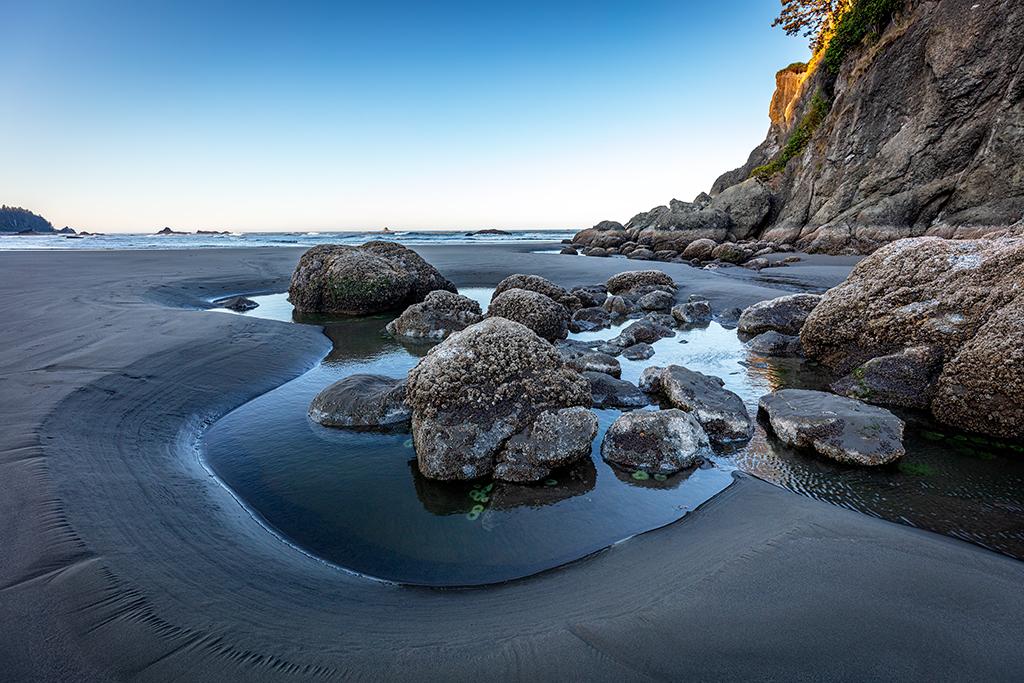
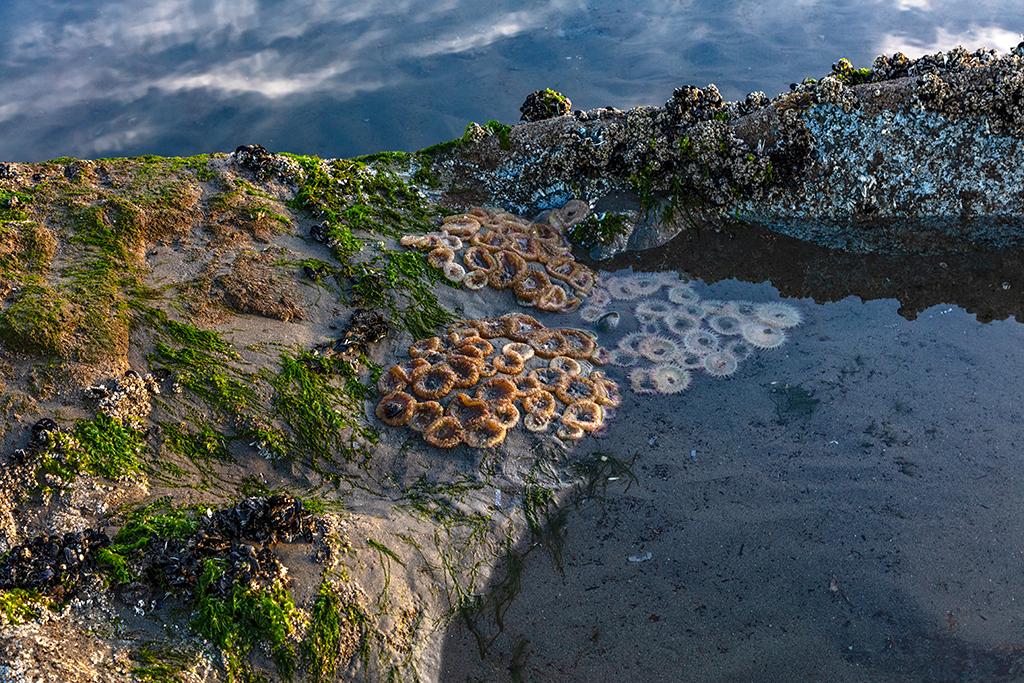
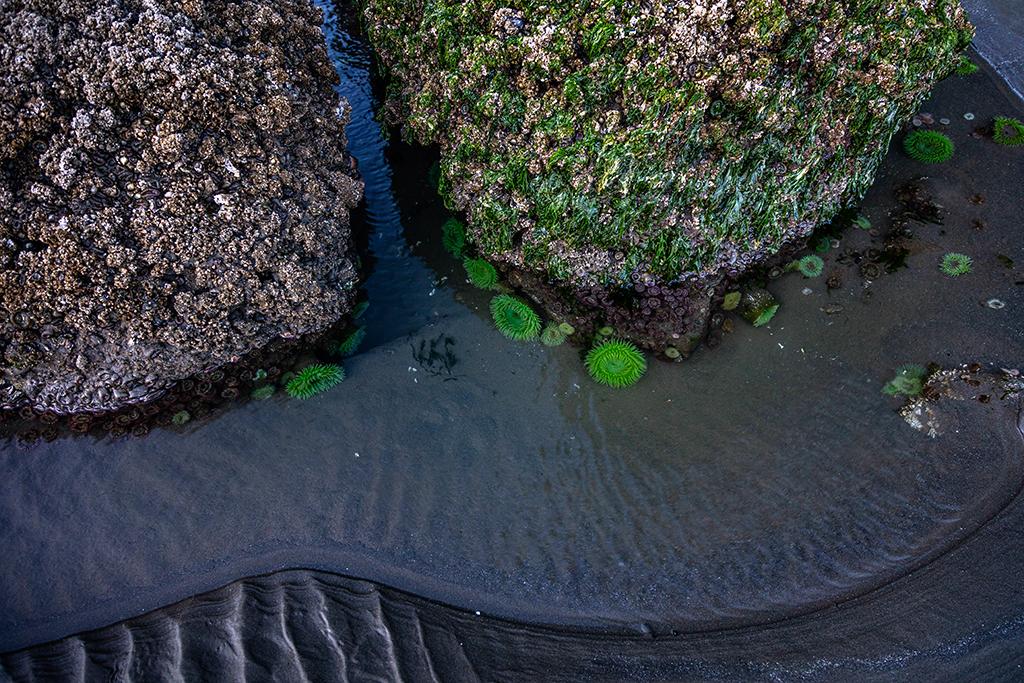
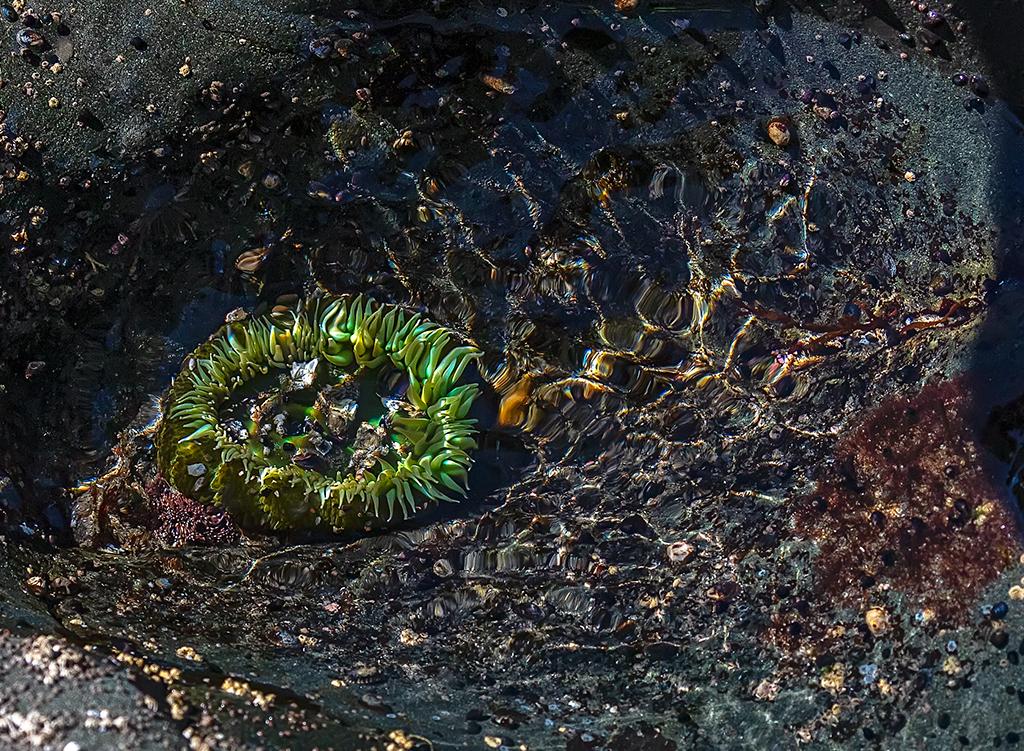
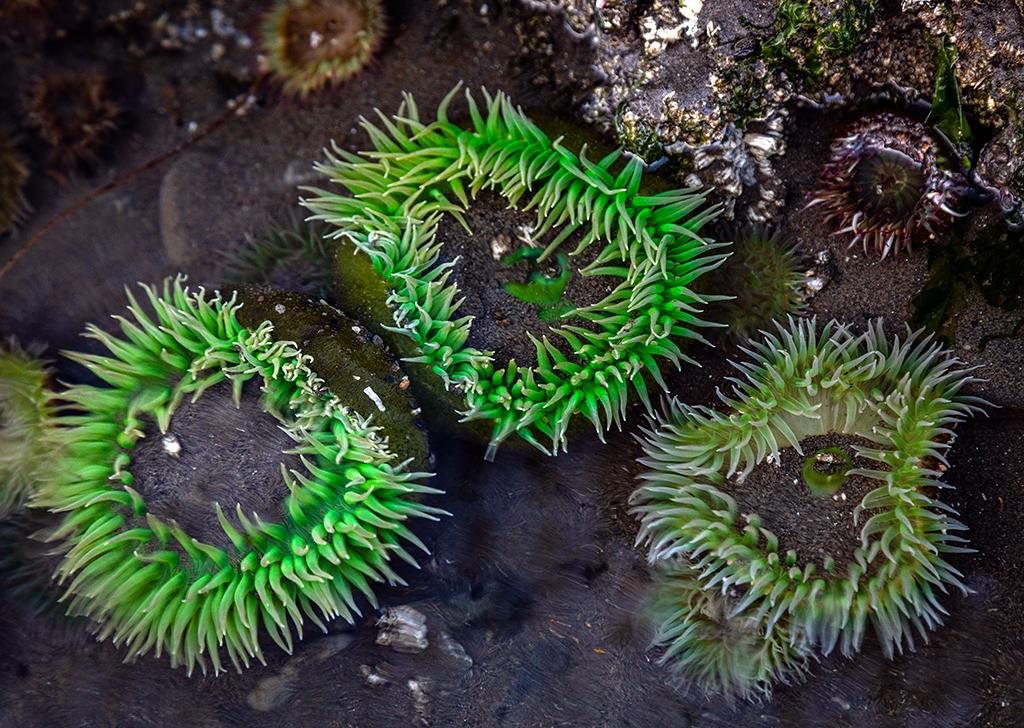
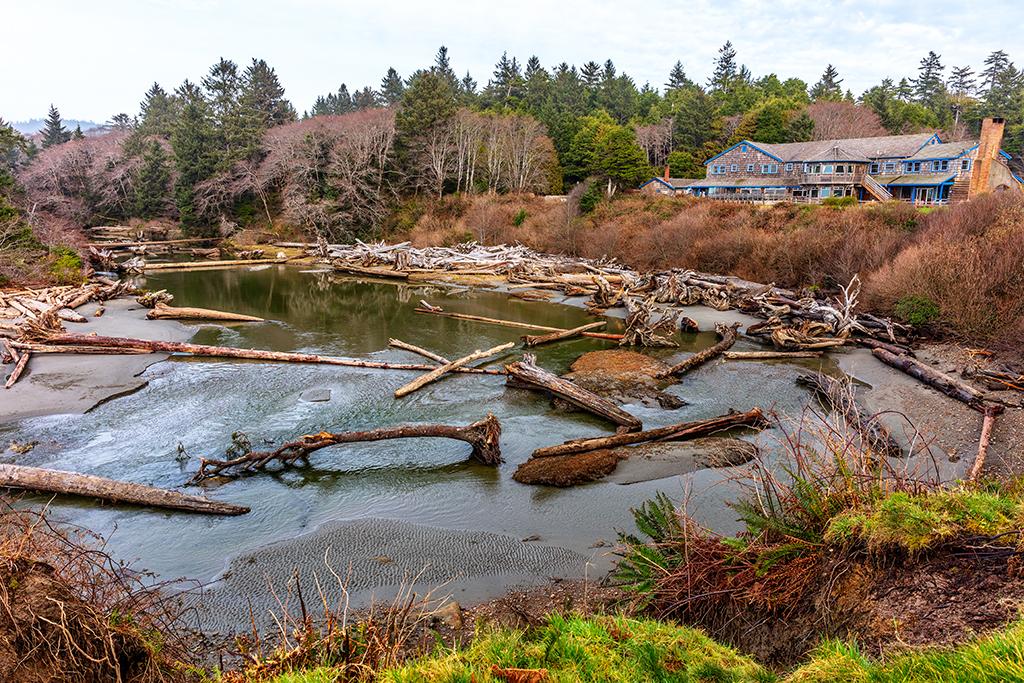
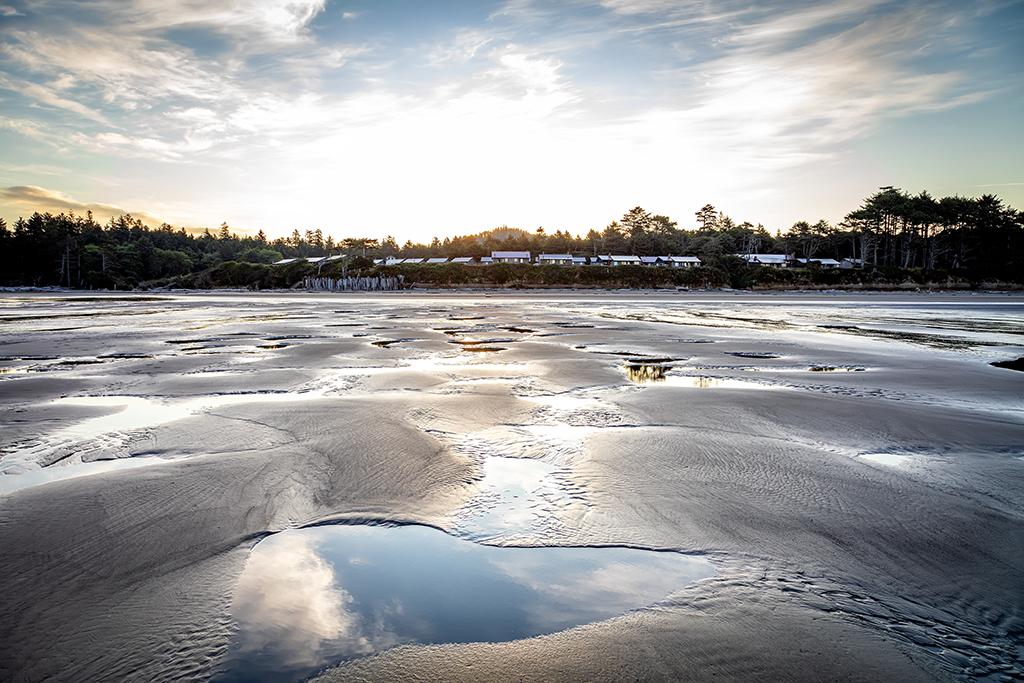
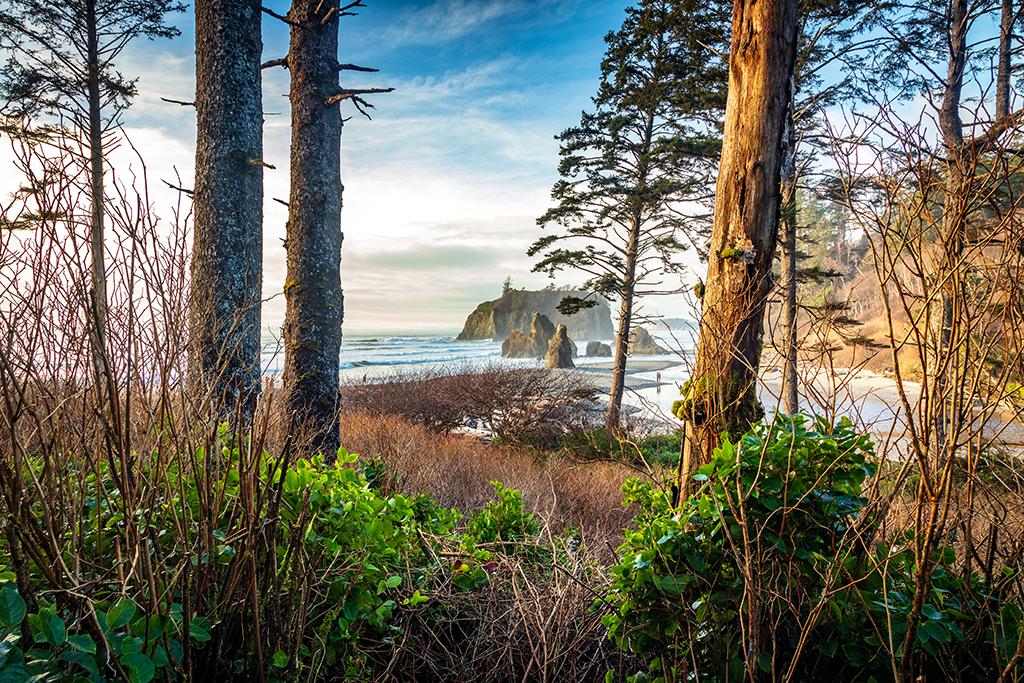
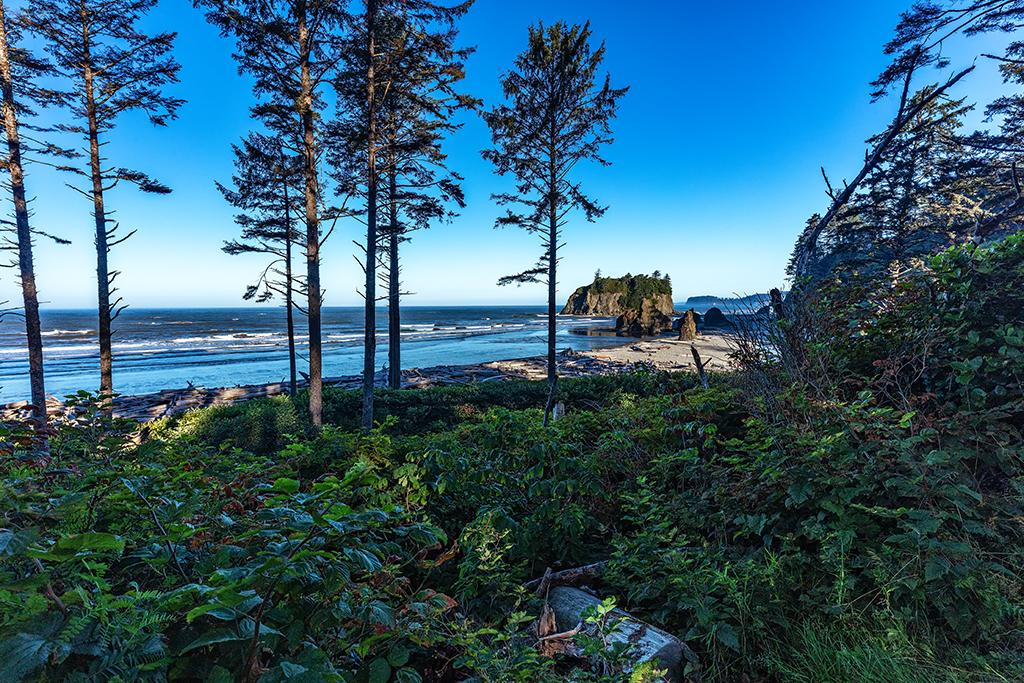
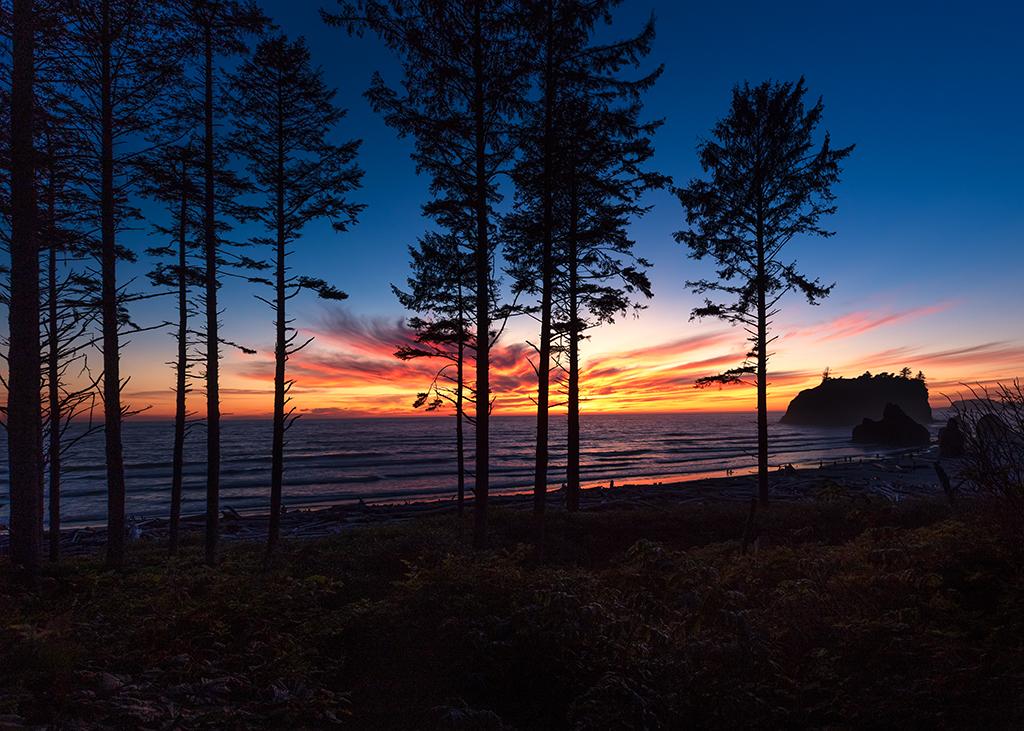
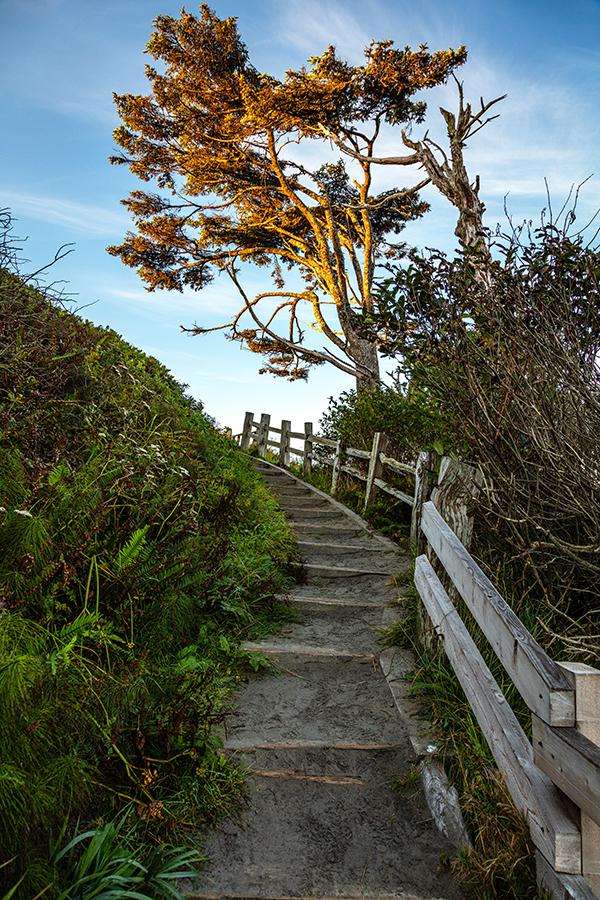
Comments
A really good article, Rebecca. And great photos and advice, as usual.
I really like how you captured the power of the ocean by turning your camera away from it for 'Bluff scenery at Kalaloch'. The transition from reddish brush to green forest marks the trimline created by the highest winter surf that is rearranging the beach logs from year to year. Even lesser storms with ten-foot waves, rather than winter's thirty-plus footers, can effectively cancel low tides for days.
Well done! I spent a great deal of my youth and young adult life camping in that area. You captured it wonderfully.
rebecca - take me along with you.. anywhere!
We visited Olympic National Park several years ago. The photos bring back mrmories. We saw a lot of sea stars in the tide pools at low tide.